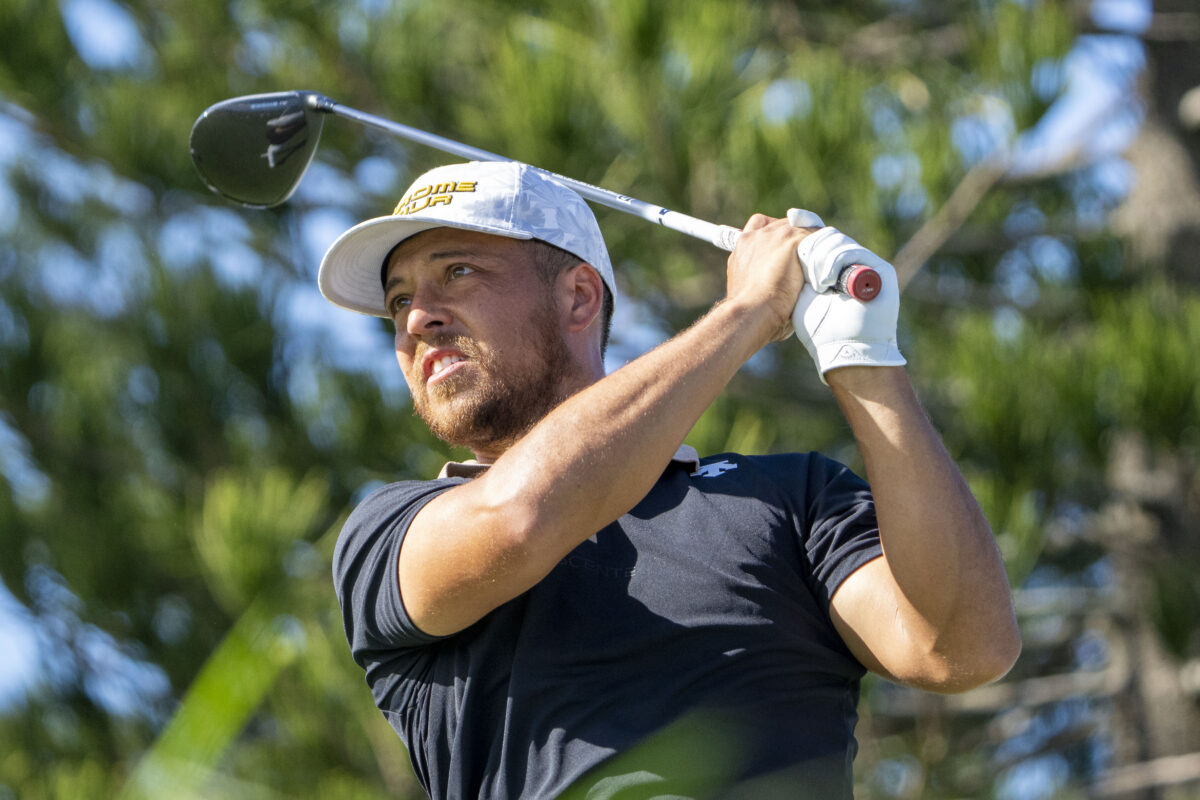Xander Schauffele has licked his wounds from Sunday’s final round of the Players Championship and he’s ready to get back on the horse this week at the Valspar Championship at Innisbrook Resort’s Copperhead Course in Palm Harbor, Florida.
Schauffele held a one-stroke lead after 54 holes at the PGA Tour’s flagship event and still remained in front by the same margin with six holes to go, but he made two late bogeys and missed a 7-foot birdie putt at 17 to tie en route to finishing one stroke behind Players champ Scottie Scheffler.
That makes Schauffele winless the last six times he’s been in the final pairing and his 13th career runner-up finish. When asked for his reaction to giving “the haters” on social media more ammunition to the contention that he can’t close, Schauffele said, “I’ll probably join them in the Haterade at this moment. But it is what it is. These suck. When I went to bed last night, it’s not exactly how I envisioned walking off the 18th green. I’ll lick my wounds and right back to it next week.”
Schauffele, 29, has had a few days to reflect on his latest close call and has found some positives. He had struggled to figure out TPC Sawgrass since the tournament shifted from May (where he finished second in 2018) to its March date and so while he “didn’t get it done,” he was proud of his performance and noted that he rated his ball-striking in the final round when he shot 70 to be superior than a day earlier when he shot 65.
“When you’re chasing, you can pile up those birdies and get into a nice rhythm. When you’re up front, you’re just watching it happen,” he said. “My dad sent me a text to try to be as proactive as possible and not reactive.”
Schauffele has been coached by his father, Stefan, since he was a kid, but he recently relocated from the West Coast to Florida and began working with noted instructor Chris Como, who has worked with Tiger Woods and Bryson DeChambeau in the past and whose current stable includes Jason Day.

“I really trust him,” Schauffele said of Como last week. “He’s learning that I can be a bit — I wouldn’t call myself a head case but I can be a little too technical at times. So he’s put me on a bit of a trickle in terms of information.”.
Speaking during his pre-tournament press conference on Tuesday, Schauffele used that word — trickle — again when referring to his level of trust in the swing changes he’s made, calling it “a slow trickle.”
Schauffele was quick to point out that his father always knew this day was going to come when he’d have to turn the coaching duties over to someone else to help his son take his game to the next level. There’s not much room for improvement. Schauffele is ranked No. 5 in the world, winner of seven Tour titles, an Olympic gold medal in 2020, a member on the last two U.S. Ryder Cup and Presidents Cup teams, and has made 41 consecutive cuts, the longest current streak on Tour.
But he’s hungry to get back into the winner’s circle after being shut out last year and to snatch that elusive first major championship. His father, he made clear, is still involved and even if he wasn’t smoking his trademark cigar on the grounds at TPC Sawgrass last week, his voice was ever-present upstairs in his son’s head.
“Everything that’s sort of up in my brain mentally has been fed to me by my dad, and probably from some sort of German philosopher way back when,” Schauffele said.
Last weekend, two of his dad’s favorite sayings – “a steady drip caves a stone,” and to “commit, execute and accept” – which have been hammered into his head from an impressionable age, popped from Schauffele’s mouth during his press conferences.
“Even when I was nine, he made a little thing for me that had the CEA in it and it sort of had a nice ring to it. So I feel like it sort of applies to everything that I do on and off the course, and it’s a really simple way to think of things and pretty effective, if you can make it work,” he said.
Feeling better about his game and the positive takeaways from his three-way tie for second, Schauffele is ready to move forward. He’s only played the Valspar Championship once before, but added it to his schedule now that he can drive to the Florida Swing events in his car with wife Maya and their dog.
“I feel like the best is in front of me, and the only way it’s not going to be in front of me is if I let all these things get to my head and not play my game,” he said. “After a close call last week, sometimes it’s nice just to get back to work and kind of put your head down and try to figure out a new golf course, so happy to be here.”
[lawrence-auto-related count=1 tag=451189506]

